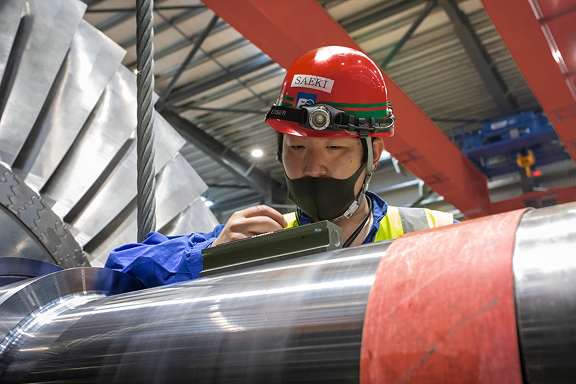The people who do the work are deeply involved in designing how they work, including developing guidelines and procedures to capture how we do our work successfully and safely.
We use Bowtie risk assessment methodology to help understand how to mitigate risks and develop robust emergency responses to potential events. We put in place prioritised action plans that address risks through the implementation of effective controls. Our people and leaders play a key role in verifying the identified controls are working. We regularly review our risks to make sure that we are focusing on the right things and addressing any emergent risks. To do this, we establish prioritised action plans that address risks through the implementation of controls.
We are a learning organisation, learning not just from when things go wrong but by also seeking to understand why normal work is successful most of the time. We believe if we can learn from what makes us successful, and strengthen these areas even more, it will lead to fewer incidents.
Our tools include:
Our people are our best source of insight, and we have both formal and informal ways of engaging with them and making sure we all know how work gets done safely and successfully:

In addition, each Contact site has a Health and Safety committee, with diverse members from frontline to managers. These committees have their own budgets and charters, and through regular meetings gather insights and set expectations for the site.
We use the insights from all these channels to identify improvement opportunities and allocate resources to priority areas. These insights help us put in place relevant training, development, and learning opportunities to ensure our people are knowledgeable in all aspects of occupational health and safety. Initiatives include communications campaigns on key topics, learning seminars, and online learning via Contact University which is available to all our team members.
Our investment in role-specific health and safety training – from first aid, to confined space entry, and hazardous substance handling, together with ongoing mentoring – ensures work is carried out safely.
When incidents do occur, our learning team approach brings together the teams involved with minimal management presence. Through expert facilitation, timelines are established, stories are told, and everyone involved gets the opportunity to contribute. We look at the hierarchy of controls to ensure actions are focused on being able to engineer, isolate, substitute or eliminate hazards rather than relying on administrative controls. Learning teams produce better outcomes and recommendations than traditional investigations because we don’t focus on blame, instead we understand and learn more because we engage with people who do the work. .
A great demonstration of our people-led approach is the Get Home Safe app.
Ken Middleton works in remote areas around our Clyde hydro plant. As a lone worker he found the system for checking on him and his colleagues was manual, unreliable and occasionally error prone – Ken thought there had to be a better way. After doing some research in his own time, he found a local company who had developed an app for this exact purpose. He shared it with his health and safety committee and a successful pilot quickly followed in 2022. Now, Get Home Safe has been rolled out to all lone workers across Contact.

For independent complaint or pricing advice, click here. UDL & Powerswitch can help.
To read our Residential Consumer Care policy on how we'll keep you safe and connected, click here.